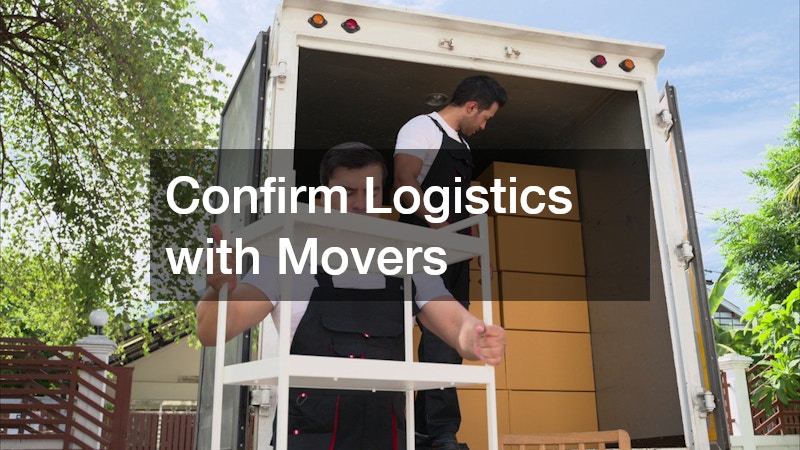Moving into a new home is one of life’s biggest milestones—it’s exciting, a little chaotic, and full of possibilities. Whether you’re upgrading to a bigger space or settling into your very first home, the process can feel overwhelming without a solid plan. From decluttering before the move to testing your home systems afterward, having a checklist keeps everything running smoothly.
To help you transition like a pro, here’s a complete home buyer’s moving checklist designed to keep stress levels low and excitement levels high.
Pre-Move Checklist
Before you even start packing boxes, there’s a lot you can do to make moving day easier. Think of this stage as the “prep and plan” phase—it’s your chance to simplify, organize, and ensure your new home is ready for your arrival.
Plan Your Move

Before you start packing or tackling repairs, take time to plan your move from start to finish. Having a clear timeline and strategy makes everything less overwhelming—and helps you avoid those last-minute scrambles.
Start by setting a move date that gives you enough time to organize, pack, and handle unexpected hiccups. Then decide whether you’ll hire residential movers or handle the move yourself.
If you’re hiring movers:
-
Book early, especially during peak moving seasons.
-
Compare quotes and reviews to find a reliable company that fits your budget.
-
Confirm insurance coverage for your belongings.
-
Discuss logistics like truck size, parking space, and any heavy or fragile items.
If you’re moving on your own:
-
Reserve a rental truck in advance to secure the right size.
-
Gather moving supplies like boxes, tape, and bubble wrap.
-
Recruit friends or family for moving day and plan out your loading order.
-
Make a packing schedule to spread the workload over several days or weeks.
A little planning goes a long way. By organizing your move early, you’ll save yourself from stress, delays, and those “where did I put that box?” moments on moving day.
Declutter and Downsize
Before you start packing, take a good look at what you actually want to bring with you. Moving is the perfect excuse to declutter and downsize. The fewer items you move, the easier (and cheaper) the process becomes.
Go room by room and sort your belongings into four categories: keep, donate, sell, or toss.
-
Keep what you love and use regularly.
-
Donate items in good condition that you no longer need.
-
Sell anything that could help fund your moving expenses.
-
Toss things that are broken, outdated, or beyond repair.
You can even host a garage sale or list items online to make a little extra cash. Decluttering before packing not only lightens your load but also gives you a fresh start in your new home—free of unnecessary clutter.
Label and Plan Your Unpacking Strategy

Packing is one thing. Unpacking—without chaos—is another story. That’s why labeling boxes properly can make all the difference when you finally arrive.
Here’s how to keep things organized:
-
Use color-coded labels or stickers for each room (e.g., blue for kitchen, yellow for bedroom).
-
Clearly mark “FRAGILE” on boxes that need extra care.
-
Number your boxes and keep a simple inventory list on your phone or a notebook so you know exactly where everything is.
-
Pack an “Open First” box for each key area—kitchen essentials, bathroom supplies, and basic tools.
By planning your unpacking strategy early, you’ll save yourself from digging through dozens of boxes later just to find your coffee maker or favorite blanket.
Schedule Essential Home Inspections
Even if your new home passed the pre-purchase inspection, it’s wise to schedule a few additional checkups before you move in. Catching potential issues early saves time, money, and stress later on. Think of it as giving your home a clean bill of health before settling in.
Key inspections to consider include:
-
Roof inspection: Look for loose shingles, leaks, or signs of wear. If you notice damage or aging materials, contact a trusted roofing service to assess whether repairs or replacements are needed. A sturdy, well-maintained roof keeps your home protected from leaks and weather-related issues.
-
Pest inspection: Check for termites, rodents, or other unwanted guests that could damage wood structures or insulation.
-
HVAC and plumbing systems: Ensure everything runs efficiently before you rely on them daily. Replace old filters, test water pressure, and check for leaks or unusual noises.
-
Electrical systems: Verify outlets, switches, and panels are safe and up to code to prevent fire hazards or power issues.
If something needs fixing, you’ll want to know before moving day—not after you’ve unpacked all your furniture. A little preventative care now can save you from costly repairs later.
Plan Minor Repairs and Upgrades
Even if your new home is move-in ready, there are usually small improvements that can make it feel more “you.” This could be as simple as repainting walls, changing light fixtures, or swapping out old hardware. Taking care of these projects before your furniture arrives saves you time, mess, and frustration later.
Make a list of easy upgrades to handle before your move:
-
Repainting rooms while they’re still empty so you can reach every corner without moving furniture around.
-
Replacing outdated fixtures or switches to give your home a modern touch and ensure everything is functioning safely.
-
Handling minor electrical work such as adding dimmer switches, updating outlets, or installing ceiling fans—these small changes can make a big difference in comfort and efficiency.
-
Repairing squeaky doors, loose handles, or minor wall damage before they turn into bigger annoyances.
-
Installing shelves or closet organizers to maximize storage and make unpacking easier.
If you’re planning bigger updates—like flooring, kitchen upgrades, or new lighting installations—now’s the perfect time to schedule them. It’s much easier to complete projects when your space is clear and uncluttered.
Evaluate Your Outdoor Space
Don’t forget the outside of your new home! Whether you have a small yard or a full garden, taking time to evaluate the exterior is just as important as inspecting the inside. A safe, well-kept outdoor space not only boosts curb appeal but also prevents long-term maintenance problems.
Here’s what to check:
-
Are the gutters clean and properly draining? Clogged gutters can lead to roof and foundation issues, so consider hiring professional gutter services to clean and inspect them before the next big rain.
-
Do the fences need repair, staining, or a fresh coat of paint to improve privacy and appearance? A sturdy, well-maintained fence not only defines your property but also enhances safety for kids and pets.
-
Is there adequate outdoor lighting for safety at night and visibility around walkways or entrances? Adding motion-sensor or solar lights can make your home safer while saving on energy costs.
-
Could you benefit from landscaping or reseeding the lawn to freshen up the yard and create a welcoming feel? A well-kept lawn makes a great first impression and can even boost your home’s value over time.
-
Are the trees on your property healthy and safely trimmed? If you notice overhanging branches or signs of decay, reach out to a reputable tree company to handle maintenance or removal safely.
Also, take a good look at your driveway, walkways, and patios. Addressing small outdoor maintenance issues now will save you bigger headaches later and help your home’s exterior shine just as brightly as the interior.
Prepare Utilities and Services
Few things are worse than arriving at your new home and realizing the lights don’t turn on or the Wi-Fi isn’t working. Before moving day, make sure all your essential utilities and services are set up so everything is ready to go when you arrive. This step helps you avoid last-minute hassles and ensures a smooth transition.
Be sure to contact providers for:
-
Electricity, gas, and water – Confirm your start dates and check if a final meter reading is required at your old home.
-
Internet and cable – Schedule installation ahead of time since appointments can book up fast.
-
Trash and recycling collection – Find out your pickup schedule and request bins if needed.
-
Home security systems (if applicable) – Update your address and test the system once you move in.
Taking care of these early ensures your new home is comfortable, efficient, and ready for everyday living from the moment you walk through the door.
Moving Day Checklist
Once the big day arrives, organization is key. Following some solid moving day advice ensures everything runs smoothly—no missing boxes, no broken lamps, and no unnecessary panic. Having a clear game plan keeps everyone on the same page and helps the day go much more smoothly.
Confirm Logistics with Movers

Whether you’re hiring professionals or enlisting friends, it’s crucial to confirm every detail before moving day. Miscommunication or forgotten steps can lead to delays, lost items, or unnecessary stress. Taking a little extra time to double-check everything pays off on the big day.
Double-check:
-
The arrival time and address with your movers. Make sure they have clear directions and any gate or access instructions.
-
Payment details and tipping expectations so there are no surprises when the job is done.
-
Parking arrangements for the moving truck at both your old and new homes, including permits if needed.
-
A backup contact number in case your movers run into traffic or any last-minute issues arise.
If you’re hiring a moving company, confirm the size of the truck, any specialty equipment for large or fragile items, and whether they offer packing assistance. Even small clarifications now can save a lot of headaches later.
If you’re moving on your own, make sure your rental truck, dolly, and packing supplies are ready the night before. Trust us—last-minute scrambles rarely end well, and a little preparation goes a long way toward a smooth, stress-free move.
Label and Plan Your Unpacking Strategy
This step carries over from your pre-move prep because it’s so important on moving day. When movers (or friends) are bringing boxes into your new place, make sure each box lands in the right room.
You can even:
-
Tape a color-coded guide near the front door showing which label belongs to which room.
-
Mark doors with sticky notes (“Kitchen,” “Living Room,” etc.).
-
Direct movers where to place big items before boxes start piling up.
A little coordination goes a long way—and it’ll make unpacking feel a lot more organized.
Protect Both Homes
On moving day, both your old and new homes are vulnerable to scuffs, scratches, and dirt. Protect them with a few simple precautions.
-
Lay down protective floor coverings like cardboard or drop cloths.
-
Use furniture pads or blankets to prevent dings in walls and doors.
-
Keep cleaning supplies handy to quickly wipe up spills or muddy footprints.
-
If it’s raining, place towels or mats near entryways.
Taking these extra steps keeps your old home ready for sale or handover—and your new one spotless from day one.
Keep a Moving Day Essentials Kit
Picture this: it’s 9 p.m., you’re exhausted, and you can’t find your toothbrush or phone charger. Avoid that by packing a moving day essentials kit.
Include:
-
Toiletries (toothbrush, soap, toilet paper)
-
A change of clothes and pajamas
-
Chargers, snacks, and bottled water
-
Basic cleaning supplies and paper towels
-
Medications and first-aid kit
-
Important documents (ID, closing papers, insurance info)
Think of it as your “survival kit” for the first 24–48 hours in your new home.
Post-Move Checklist — Settle In and Improve Your Home
You’ve survived moving day—congratulations! Now it’s time to shift focus from boxes to comfort. The post-move phase is about making your house truly feel like home.
Deep Clean Before Unpacking

Before you open a single box, give your home a deep clean. Even if the previous owners cleaned before leaving, it’s worth doing again for peace of mind.
Focus on:
-
Wiping down cabinets, drawers, and closets before loading them.
-
Scrubbing bathrooms and kitchen surfaces.
-
Vacuuming and mopping floors, especially under appliances.
-
Dusting ceiling fans, light fixtures, and vents.
You’ll never have easier access to corners and crevices than before your furniture is in place. Plus, starting fresh makes everything feel instantly more comfortable.
Inspect Plumbing and Fixtures
Once you’ve settled in, do a quick walkthrough to check that all plumbing and fixtures are functioning properly. Even small leaks or blockages can turn into costly problems if ignored, so it pays to catch them early.
Check for:
-
Dripping faucets or running toilets, which can waste water and increase your bills.
-
Leaks under sinks or around tubs—even minor moisture can cause mold or damage over time.
-
Slow drains or signs of clogged drains, which could indicate buildup or blockages that need attention.
-
Properly sealing shower doors and caulking to prevent water from seeping into cabinets or walls.
-
Weak water pressure, unusual noises, or irregular hot water flow that might indicate underlying issues.
If anything looks questionable, schedule a quick inspection or repair with professional plumbing services. This is also a good time to locate your main water shut-off valve—just in case you ever need it in an emergency.
Test Home Systems
Your new home’s systems—HVAC, electrical, and appliances—should all be tested early on. Catching issues right away ensures everything is working correctly and prevents inconvenient surprises once you settle into your routine.
Go through this quick checklist:
-
Turn on heating and cooling to verify they work properly and maintain consistent temperatures throughout the house.
-
Test all light switches and outlets by plugging in a small lamp to make sure everything is functioning safely.
-
Make sure smoke and carbon monoxide detectors are working and replace batteries if needed.
-
Check that major appliances like the stove, dishwasher, and washer/dryer function properly.
-
Listen for unusual noises or signs of wear, such as a noisy HVAC system, which could indicate that HVAC repairs are needed. Addressing these issues early helps prevent bigger, more expensive problems down the road.
Improve Safety and Energy Efficiency
Now that you’re unpacked, it’s the perfect time to make your home safer and more energy-efficient. These small upgrades not only give you peace of mind but can also help lower utility bills and prevent costly repairs down the line.
Safety and efficiency tips:
-
Change all locks—you never know who might have a spare key.
-
Install or update your home security system—smart doorbells, cameras, and motion sensors are easy upgrades that enhance safety.
-
Replace old light bulbs with energy-efficient LEDs to reduce electricity use and improve lighting quality.
-
Check wiring or outlets that seem outdated or unsafe, and hire licensed electricians for any upgrades or repairs to ensure everything meets code.
-
Add weatherstripping or insulation to improve heating and cooling efficiency and keep your energy bills in check.
-
Consider gutter cleaning or roof inspections to prevent future water damage and maintain your home’s structural integrity.
Taking care of these small details helps you settle in confidently, knowing your home is both secure and running efficiently.
Unpack Strategically
Unpacking can feel endless, but a plan helps keep things manageable. Start with the essentials, then move on to secondary rooms as time allows.
Here’s a smart order to follow:
-
Bedrooms: Set up beds first—you’ll need rest after a long move.
-
Kitchen: Get basic cooking and dining supplies organized.
-
Bathrooms: Stock toiletries, towels, and cleaning products.
-
Living areas: Arrange furniture and connect electronics.
-
Garage or storage spaces: Save these for last.
Try to unpack one room at a time instead of bouncing around. It helps you feel progress faster and prevents clutter from spreading.
Add Personal Touches
Now for the fun part—making your house feel like home. Decorating and personalizing your new space is what transforms it from a house into your haven.
Simple ways to add warmth and personality:
-
Hang family photos or your favorite artwork.
-
Add plants or fresh flowers for life and color.
-
Layer rugs, pillows, and throws to make rooms cozier.
-
Scent the air with candles or diffusers.
-
Set up a cozy reading nook or entertainment spot.
Take your time—personalizing your space doesn’t have to happen overnight. The beauty of homeownership is making it uniquely yours, one detail at a time.
Final Thoughts
Moving into a new home doesn’t have to be chaotic or stressful. With the right preparation and a clear checklist, you can turn what’s typically an exhausting experience into a smooth, exciting transition.
From decluttering and scheduling inspections to testing systems and adding your personal touch, every step brings you closer to feeling truly at home. Remember, it’s not just about getting everything done—it’s about enjoying the process of creating a space that reflects your life, your style, and your new beginning.
So take a deep breath, check off those boxes, and settle into your new home stress-free—you’ve earned it.
